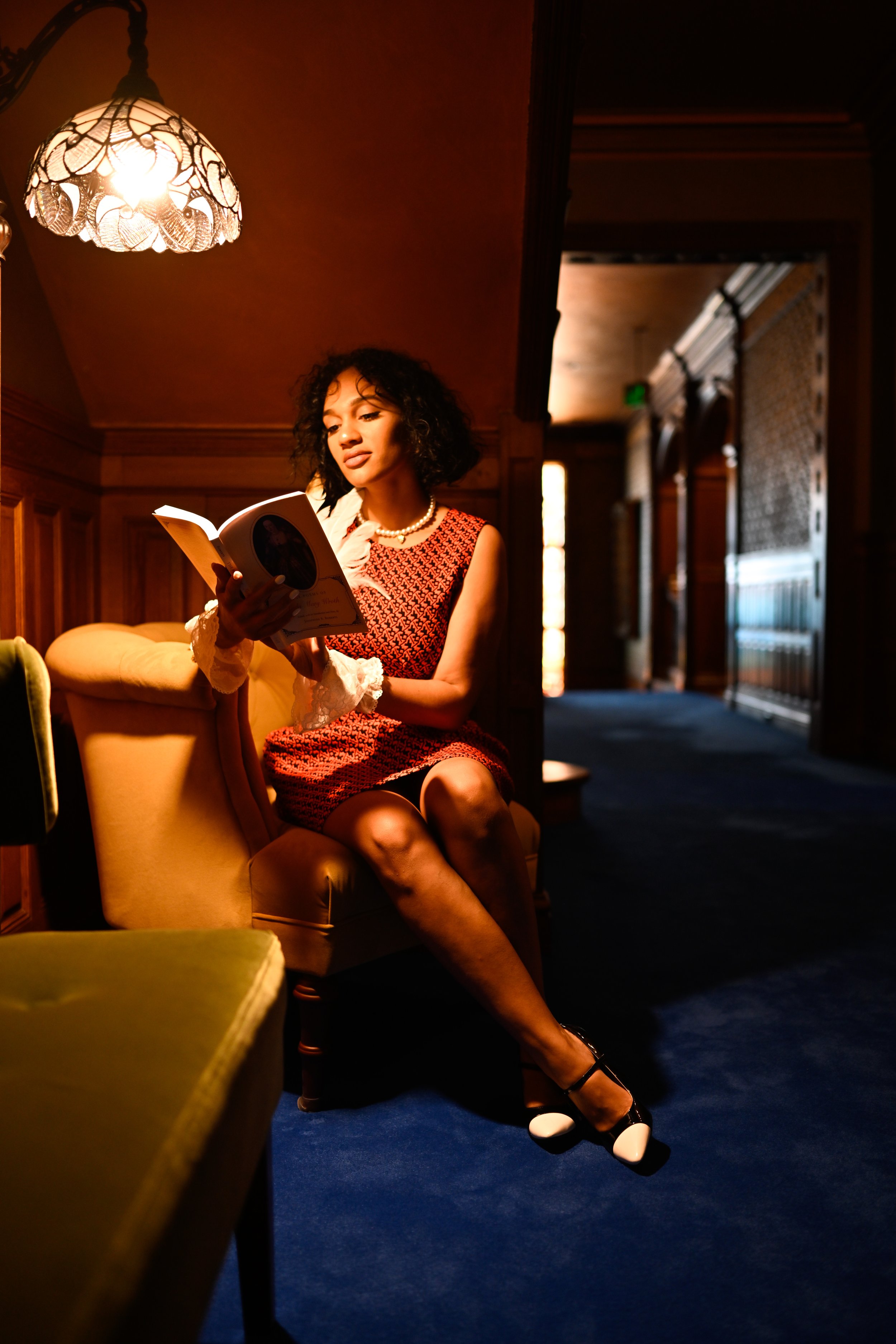A Look Inspired by “The Poems of Lady Mary Wroth”



Readers, while I’ve created many looks, this one stands out as a favorite! The location I chose perfectly complements the depiction of Lady Mary Wroth (see third slide).
As we’ve learned, clothing was a significant indicator of rank and position in 17th-century society. Scholarly author Mary Ellen Lamb notes, “Clothing signified through expense. Characters reveal their high status, and in theory their inner nobility, by wearing costly garments, often colored in high-priced dyes, as well as jewels. Characters also use the color of their clothing to express individual emotions, often explicitly stated in Wroth’s text” (Lamb 309). Wroth intentionally selected the cut, color, and fabric of her characters' garments to reflect their internal emotions and social status.
Analyzing fabric choices, dyed materials were notably expensive, often imported from Italy. Elite women typically wore black and white to convey dominance and “virginity,” while colors like blue, green, and teal indicated royal power. Bright colors like red and orange became more accessible after the accession of James I in 1604, marking a shift in fashion trends. The picture of Lady Mary Wroth (third slide) exemplifies her higher rank, as she wore vibrant red and orange garments.
Wearing:
Red/black/orange dress: Red White & Blue Thrift Stores
Black/white heels: Red White & Blue Thrift Stores
16th Century Pearl Black Cuffs: Available in my shop for purchase.
17th Century Pearl Feather Brooch: Available in my shop for purchase.
17th Century Pearl Locket Necklace: Dropping soon.
Sources:
Lamb, Mary Ellen. “Dressing Queens (and Some Others): Signifying through Clothing in Wroth’s Countess of Montgomery’s Urania.” Queens Matter in Early Modern Studies, 14 Feb. 2022, www.academia.edu/71381753/Dressing_Queens_and_Some_Others_Signifying_Through_Clothing_in_Wroth_s_Countess_of_Montgomery_s_Urania?email_work_card=title.

